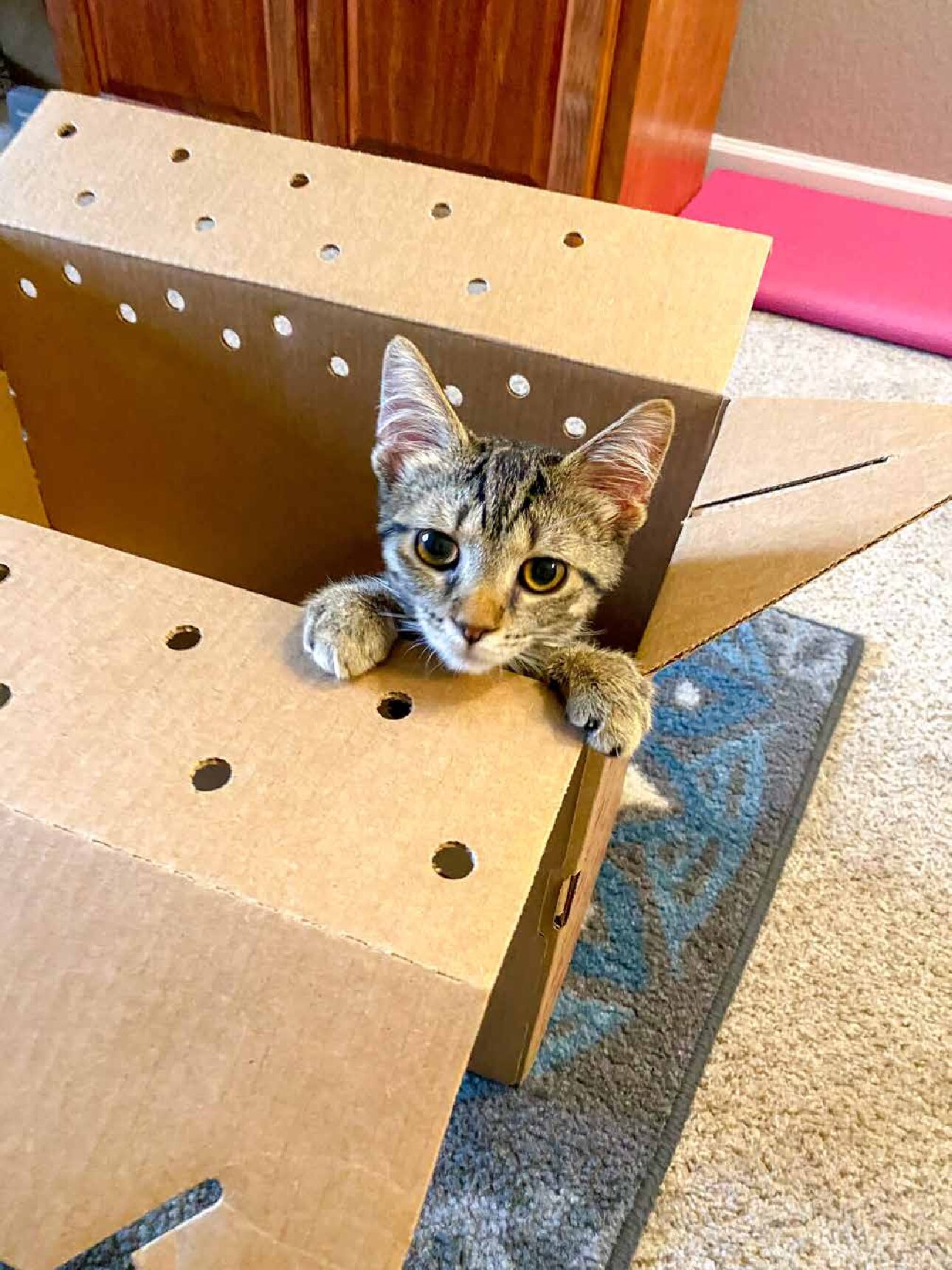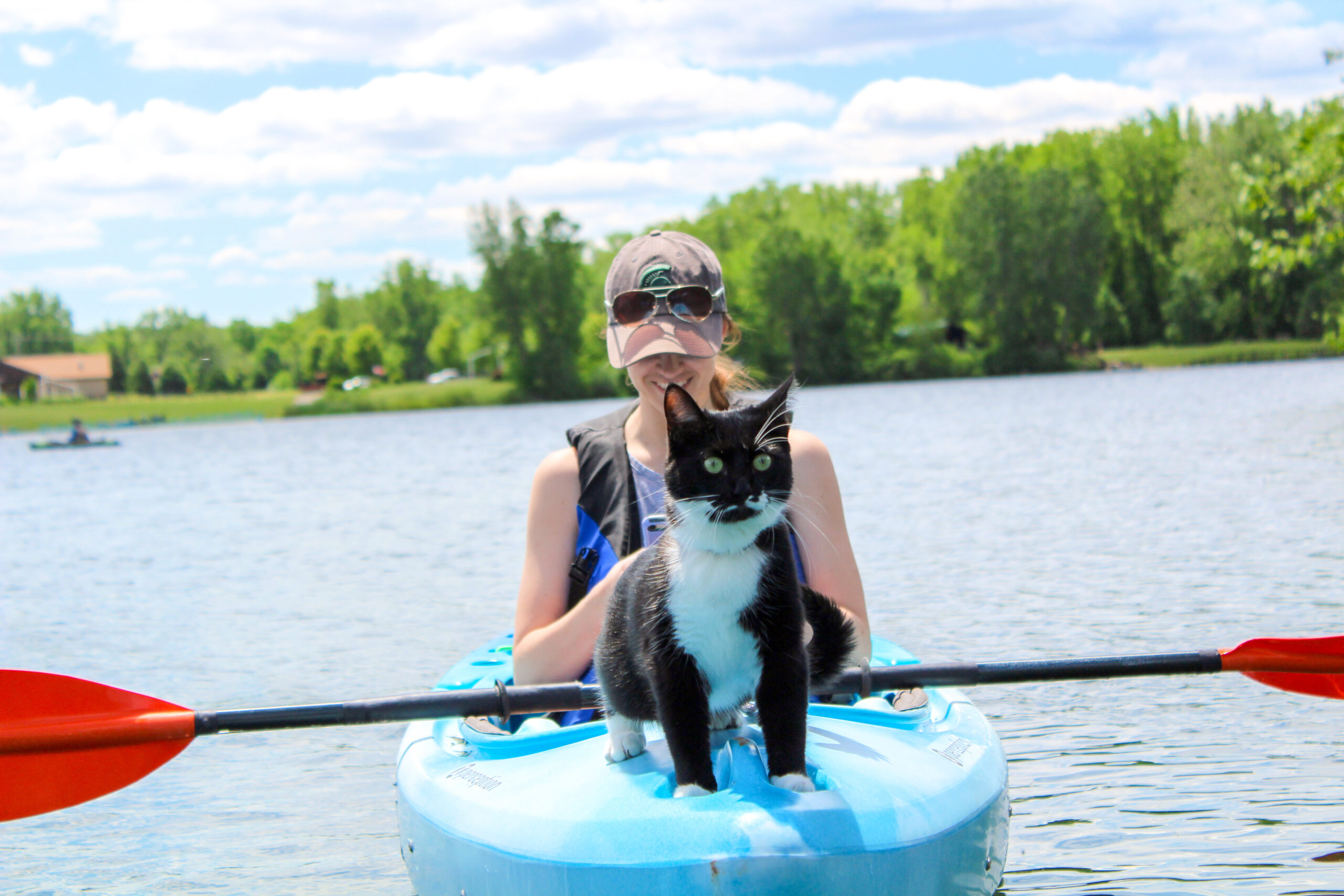
HOW TO BRING A NEW CAT/KITTEN INTO YOUR HOUSEHOLD
Are you thinking about adding a new cat to your household? First off, that is very exciting! Cats can make great companions and add lots of joy and entertainment to your everyday life. But they can also be quite a bit more work. If you have never owned a cat before, all the information out on the internet can be overwhelming. To help, we made a general little checklist of some things to consider prior to getting a cat, what items to buy before bringing the cat home, how to kitten proof your home, and how to introduce it to any current pets that you may have!
Note: We are making more in depth articles on each of these four categories coming out over the next few weeks. As they get posted, we will link them in this article. But for now, we wanted to do a general overview of some of these topics. You can click the title of each of the four categories to get to the more in depth post for each one.
Things to consider prior to getting a cat:
-
Consider your family or others living with you
- Some questions to consider: Are they willing to help out and support you? Will they play with your cat if you are too busy? Is anyone allergic?
-
Your lifestyle
- How will a cat fit into your current lifestyle? Are you willing to make any sacrifices or adjustments to accompany for a new cat?
-
Be ready to make a commitment
- Cats can live 15-20 years. It is a long-term commitment.
-
They are not as low maintenance as many people think
- Cats are playful and energetic. If they are not receiving what they need (enough play time or attention), they can become bored and destroy things around your house.
-
Finances
- Pets in general are expensive, including things such as food, treats, toys, litter, and veterinary bills.
- One thing to possibly consider is looking into pet insurance. Getting it before any major health problems arise can help you save on vet bills for the duration of their life. Check out our article on Pet Insurance here.
-
They get into EVERYTHING
- Cabinets, drawers, behind dressers, beds, or tv stands, washer and dryers, toilet, trash cans, you name it!
-
Late night zoomies
- Cats have intermittent sleep schedules. Be prepared to get woken up in the middle of the night regularly while they are young.
-
Find a veterinarian
- It is a good idea to find a veterinarian in your area before getting a cat so you can get them seen as early as possible and establish a relationship. Check out our article with some tips for How To Pick The Right Veterinarian For You.
Top items to buy before bringing a new cat or kitten home:
It’s always good to be prepared. Consider buying these items before you bring your new cat home so that you can make the transition easier for them.
-
Food
- There are so many different opinions out there on the different types of diets, so we recommend doing your own research, talking to your veterinarian, and picking a plan that works best for you.
-
Food and water bowls
- They will need something to eat and drink out of for mealtimes.
-
Carrier
- Getting them used to the carrier earlier is great and using it for trips other than the vet helps to not associate it with bad experiences.
-
Litterbox and litter
- There are many options available, including covered vs non-covered, shapes, sizes, etc. Every cat has its own preferences, so you may gave to try a few different ones.
- Just like litterboxes, there are lots of options for litter, including clay, pine, silicone, etc. Again, different cats have different preferences, so test a few.
-
Cat Bed
- You may not need to buy an actual cat bed, but having a pillow or some blankets in an area dedicated for your cat will help them settle in.
-
Collar and ID tag and/or microchip
- If your cat gets out, someone who finds it can take it to a vet or shelter to get scanned for a microchip, which will be registered to your name and phone number to help reunite you.
- A collar with ID tag is important as well. If your cat gets out, the collar can get caught on things. For that reason, a breakaway collar would be the best choice.
-
Toys
- Kittens have lots of energy. Having toys that you use to play with them entertains them and can also help establish and strengthen your bond with them as they are still getting to know you.
-
Scratching post and/or cat tree
- Cats love to scratch and claw things, including your furniture. They also love to climb. A great way to help reduce this is having a designated scratch post for them or a cat tree for climbing.
-
Grooming equipment
- Nail clippers, because starting to teach them this process earlier can make it easier in the future. A brush is also great to have, as daily grooming may be needed.
- Dental care is very important in cats, so getting a cat friendly toothbrush and toothpaste or dental treats can help keep their teeth healthy.
-
Treats
- Treats can help your cat feel more comfortable while settling into their new home. They can also be used as a reward when they are doing something good.
Kitten-Proof your house:
Cats are very curious animals. To make sure they stay safe, the best thing to do is kitten(or cat)-proof your home before bringing them there. Having an absolute kitten-proof home is going to be close to impossible to achieve. There is always going to be something you forget or something your cat will find or do that you did not predict. Also, keep in mind that all cats are different and do not have the same interests. Kitten proofing can be individualized and not every kitten needs all of these done. We do recommend doing all of these at first, and then you can slowly add things back if your kitten or cat does not show any interest.
-
Set up a designated kitten space for them
- This can include a corner of a room or an entire room. Things to include in the room could be a cat tree, scratching post, cat bed, blanket, toys, their litterbox, and their food and water bowls.
-
Check to make sure your plants are safe
- Many house plants can be toxic to cats. You can check out the Pet Poison Control website to see if the plants you have in your house are safe.
- We also have a post on What Plants To Avoid With Your Cat that you can check out, which includes a list of plants, as well as some common symptoms your cat may experience if they ate them.
-
Secure cabinets and any other areas you want to keep off-limits to your cat
- Cats can often learn to open cabinets. To prevent this, you can try placing something heavier in front of the cabinet so that they cannot get in or you can place child-proof locks on the doors.
-
Store breakable and fragile items in areas your cat cannot reach
- Try to make sure any fragile or breakable items are stowed away out of your kitten’s reach. This not only prevents them from breaking your things, but also keeps them safe from broken glass or other hazards that can come with breaking items.
-
Secure any screens or windows
- Cats can lay up against them and fall out the windows if you are not careful. Make sure they are secure, and always closed windows when you are not around.
-
Keep the toilet lid down
- Kittens may jump up to check it out and can fall in. When they are very little, they may have a hard time getting out and can possibly end up drowning. Easiest way to prevent this is to just leave the lid closed whenever it is not being used.
-
Lock up cleaning products, medications, and other chemicals in a safe spot
- Detergents, bleach, paints, pesticides, rat poison, antifreeze, and much more are very dangerous to your cat if ingested. These products should all be stored and locked away in a safe area that your kitten cannot get to at any time.
-
Plastic bags
- Plastic bags can get stuck on around your cat and cause injury or possibly even suffocation if they cannot get out of the bag.
-
Electrical cords
- Kittens love to play and bite on cables. Try to keep them as short as possible. There are coverings you can buy to protect the wires. Check with your local hardware store for safe options to wrap cords.
-
String/Ribbon/Rubber bands/Hair or Twist Ties/Sewing Supplies/Any Other Small Items
- It is very easy for your cat to swallow these items, and they can cause serious health risks and possibly require surgery to remove if they get stuck in their digestive tract.
Introducing new cat to current pets:
Cats are territorial by nature. Introducing a new cat to the home must be done slowly in order to avoid them possibly never getting along or getting aggressive with each other.
-
Have a realistic expectation going into it
- Time and patience are needed. You cannot expect your new cat to be best friends with your other pet(s) right away.
-
Put the new cat into a confined area
- When you first bring the new cat home, have a confined area that you can put them in right away. Do not let the two animals see meet each other right away.
-
Scent swapping
- Take a blanket, toy, or something with each animals’ scent on it and allow the other one to sniff it. A cat may hiss or spit at the object and a dog may growl or aggressively bite/paw at it. You want to continue to swap these objects until both pets do not react negatively to the other pets’ scent before allowing them to meet.
-
Territory swapping
- Let your new cat out to explore the rest of the house while the current pets get closed in the room to explore and smell there. Be sure to not let them interact when switching rooms.
-
Non-visual introduction
- Let your current pet sniff under the door to the room the new cat is in. Once they can sniff noses or play with their paws under the door without hissing or growling, you can move on to introducing them face-to-face.
-
Introductions through barrier
- The first introduction should have a barrier between the pets, such as a screen door or a baby gate. Once they can interact with each other through the barrier without any signs of aggression, you can introduce them without a barrier.
-
Introductions without a barrier
- Be sure that there is someone watching them at all times for the first handful of interactions. Try to do this while both pets are calm to help ease the process and give them rewards for good behavior.
-
Unsupervised time
- You want to be completely sure they get along 100% of the time before leaving them alone. We recommend leaving for short trips first and work your way up to full days.
-
Give them time
- Every animal will react to new animals differently. Some pets may be playing and become friends after a day or two, others it can takes weeks to months. Read your pets’ body language and if they need more time, give them more time. You want to make sure that all the pets are comfortable. Stress can lead to unwanted behaviors and possibly aggression towards one another.
Conclusion:
While getting a new cat is a very exciting time, there is a lot to consider. They are lifelong commitments and need your love and support to live long, healthy lives. We hope that this article is helpful to you in some way or another. Be on the lookout for more in depth articles on each of the four categories we went over in this one!
You May Also Like

How To Go Kayaking With Your Cat
July 10, 2020
How To Take Your Cat To A Restaurant With You
August 20, 2021



3 Comments
Katrina
LOVE your article. So great to bring a new furbaby home and very exciting but, wish more people realized their new kitten is a “being” that needs attention, love, food, medical and protection &, as you stated, 15+ years of commitment. Thanks so much for posting this.
Caitlin
Love this post! You cover all the areas that need to be considered before bringing you new furry friend home.
Joe @ Mini Riches
We’re unfortunately not permitted to have pets in our current rental, but do intend to bring in a couple after we move into our new home. This will definitely be helpful!